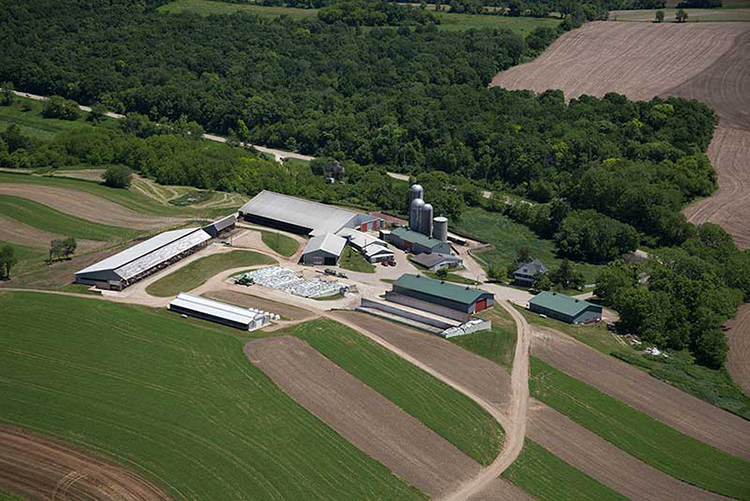
Planting cover crops is not just a fad; a packed house at the 2022 Winter Wisconsin Cover Crop Conference held in mid-December represented the growing interest in this agronomic practice.
During the meeting, a panel discussion featured three farmers who described their experiences with planting cover crops and their advice for beginners. One of the panel members was Mark Keller, a dairy farmer from Mount Horeb, Wis.
Kellercrest Holsteins in southern Wisconsin is operated by Keller and his brother, Tim. In the fall of 1999, they expanded from 70 cows to 300 cows when Keller returned home to the farm after working for a little over a decade in the agronomy field. Their journey with cover crops began in 2007, and Keller highlighted several benefits he feels that practice brings to their dairy.
The first is the environmental advantages. Keller shared that their farm has land located in two watersheds, and trout streams border their property. “We need to be very conscious of that,” Keller said, and he indicated that their family has been focused on conservation-friendly practices that prevent soil erosion for his whole life, starting back when his parents were running the dairy.
They dipped their toes into cover crops specifically as part of the Pleasant Valley Watershed Project, which was a precursor to today’s farmer-led watershed groups that are scattered around Wisconsin. They started introducing winter rye into their cropping plan, as they were buying feed and needed another forage source anyway. They began using it as a heifer feed but soon found it to be a quality feed for other animals, too.
“It's a great feed,” Keller said, considering the feed value to be another benefit of cover crops. “It made a very nice heifer feed, and now it is part of our milk cow diet. It makes a great feed for cattle,” he emphasized.
No more phosphorus fertilizer
Keeping the ground covered helps capture more of the nutrients, preventing them from flowing into the nearby streams. They also provide an economic benefit. Keller said that when milk prices crashed in 2009, they went cold turkey and quit buying commercial phosphorus fertilizer. Their soils were high in phosphorus anyway, so they went strictly to using manure. Eliminating that purchase saved them $18,000 annually, and at today’s fertilizer prices, Keller predicts their savings could be double that or more.
“We are really trying to utilize that phosphorus,” he noted. “We apply manure to all four corners of the farm and spread it out as evenly as we can.”
Cover crops and no-till practices go hand in hand for the Kellers, and the result is fewer trips across the field and less nutrient and soil loss. “Why do you want to see your soil go down the river? That’s money,” Keller pointed out.
Their dairy daily hauls manure, so expanding the land available for application is also important to them. This is another way that cover crops fit well into their overall farm plan.
The Kellers were recognized for their conservation efforts when they were presented with an Innovation Center for U.S. Dairy Sustainability Awards in 2017. Keller spoke highly of the practices they have implemented over the last decade and a half, but he also reiterated that conservation has always been part of how they farmed in the past, and it is certain to be part of their future, too.








